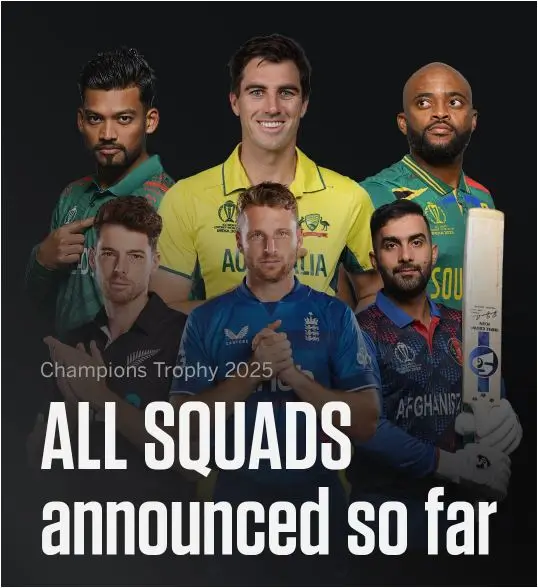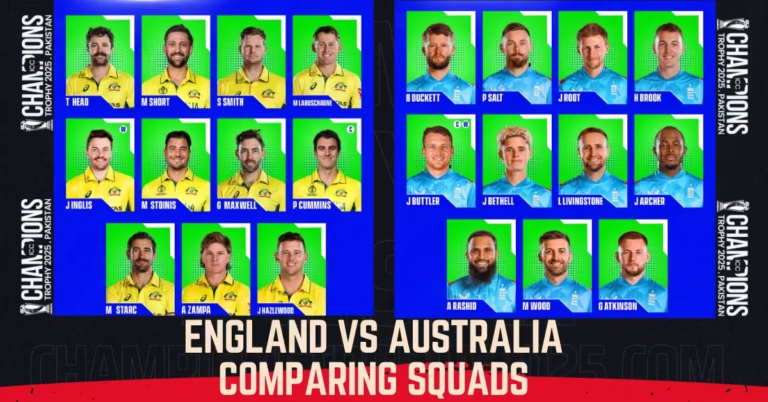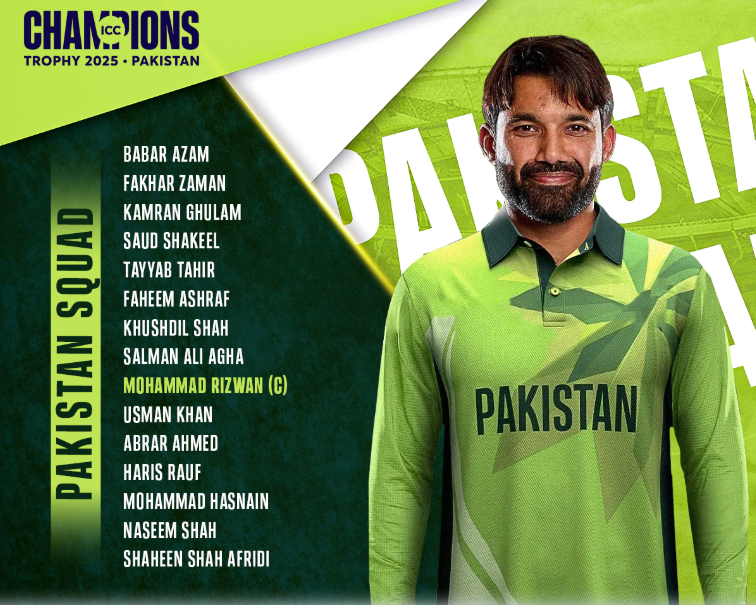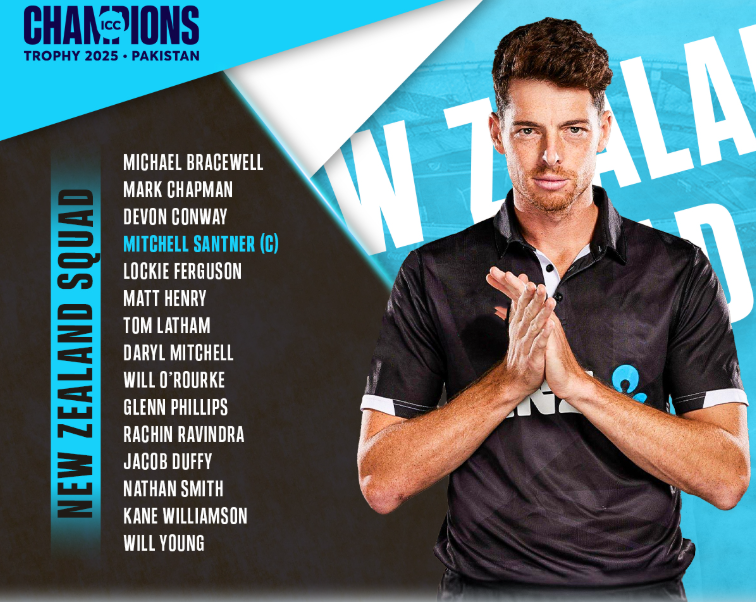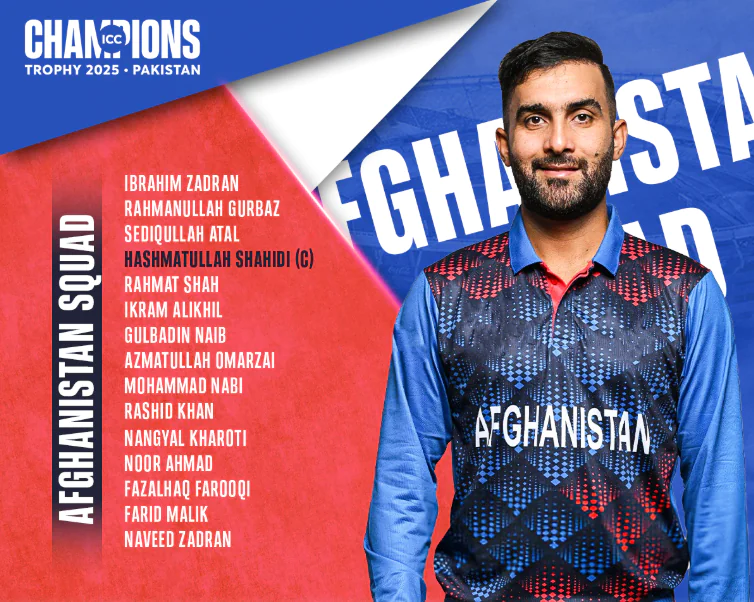
The ICC Champions Trophy 2025 is set to reignite the storied rivalry between India and Australia, two cricketing powerhouses with rich histories in international tournaments. As both teams prepare to compete in this prestigious event, a detailed comparison of their squads offers insights into their strengths, weaknesses, and potential impact on the tournament.
Squad Overview
India’s Squad:
- Captain: Rohit Sharma
- Vice-Captain: Shubman Gill
- Players: Virat Kohli, Shreyas Iyer, KL Rahul, Hardik Pandya, Axar Patel, Washington Sundar, Kuldeep Yadav, Jasprit Bumrah, Mohammad Shami, Arshdeep Singh, Yashasvi Jaiswal, Rishabh Pant, Ravindra Jadeja.
India’s selection reflects a blend of experience and youth. Notably, Yashasvi J … has received his maiden ODI call-up, adding fresh energy to the batting lineup. The inclusion of Jasprit Bumrah and Mohammed Shami bolsters the pace attack, while the spin department is strengthened by Kuldeep Yadav and Ravindra Jadeja.
Australia’s Squad:
- Captain: Pat Cummins
- Players: Alex Carey, Nathan Ellis, Aaron Hardie, Josh Hazlewood, Travis Head, Josh Inglis, Marnus Labuschagne, Mitchell Marsh, Glenn Maxwell, Matt Short, Steve Smith, Mitchell Starc, Marcus Stoinis, Adam Zampa
Australia’s squad showcases a mix of seasoned campaigners and emerging talents. The recall of Marcus Stoinis and the inclusion of all-rounder Aaron Hardie provide depth, while the pace trio of Pat Cummins, Josh Hazlewood, and Mitchell Starc offers formidable firepower. Notably, Jake Fraser-McGurk … been omitted following a dip in form during the Big Bash League.
Batting Comparison
Top Order
India’s top order features the prolific duo of Rohit Sharma and Shubman Gill. Rohit’s aggressive style complements Gill’s technical finesse, making them a formidable opening pair. Australia counters with Travis Head and Matthew Short, both known for their attacking approach, setting an aggressive tone early in the innings.
Middle Order
Virat Kohli anchors India’s middle order, bringing consistency and experience. Alongside him, Shreyas Iyer and KL Rahul add stability and flair. Australia’s middle order is bolstered by Steve Smith’s classical technique and Marnus Labuschagne’s adaptability, both capable of anchoring the innings under pressure.
Finishers
Hardik Pandya serves as India’s primary finisher, renowned for his explosive power-hitting in the death overs. Ravindra Jadeja provides additional support with his all-round capabilities. For Australia, Glenn Maxwell’s unorthodox and aggressive batting style makes him a dangerous finisher, capable of changing the game’s complexion rapidly.
Bowling Attack
Fast Bowlers
India’s pace attack is spearheaded by Jasprit Bumrah, whose precision and lethal yorkers are well-recognized. Mohammed Shami complements him with his seam movement and experience. Australia’s fast-bowling arsenal includes Pat Cummins, Josh Hazlewood, and Mitchell Starc, each bringing pace, bounce, and wicket-taking abilities, forming a formidable trio.
Spin Department
Kuldeep Yadav leads India’s spin attack with his wrist spin, supported by the all-round capabilities of Ravindra Jadeja and Axar Patel. Australia relies on Adam Zampa’s leg-spin to provide breakthroughs in the middle overs, with part-time options like Glenn Maxwell and Travis Head offering additional spin support.
Death Bowling & Variations
In the death overs, India’s reliance on Bumrah’s pinpoint accuracy and Pandya’s variations is pivotal. Australia’s strategy centers on Starc’s lethal yorkers and Cummins’ disciplined line and length to contain runs and secure wickets in the final stages.
All-Rounders & Team Balance
India’s all-round department is robust, featuring Hardik Pandya, Ravindra Jadeja, and Axar Patel, all of whom contribute significantly with both bat and ball, enhancing the team’s balance. Australia’s inclusion of Marcus Stoinis, Glenn Maxwell, and the emerging Aaron Hardie provides depth, offering flexibility in both batting and bowling departments.
Captaincy & Leadership
Rohit Sharma’s leadership for India is marked by strategic acumen and calmness under pressure. His experience in guiding Mumbai Indians to multiple IPL titles underscores his tactical prowess. Pat Cummins, leading Australia, brings a bowler’s perspective to captaincy, known for his proactive field placements and aggressive approach, aiming to maintain Australia’s competitive edge.
Strengths & Weaknesses of Each Team
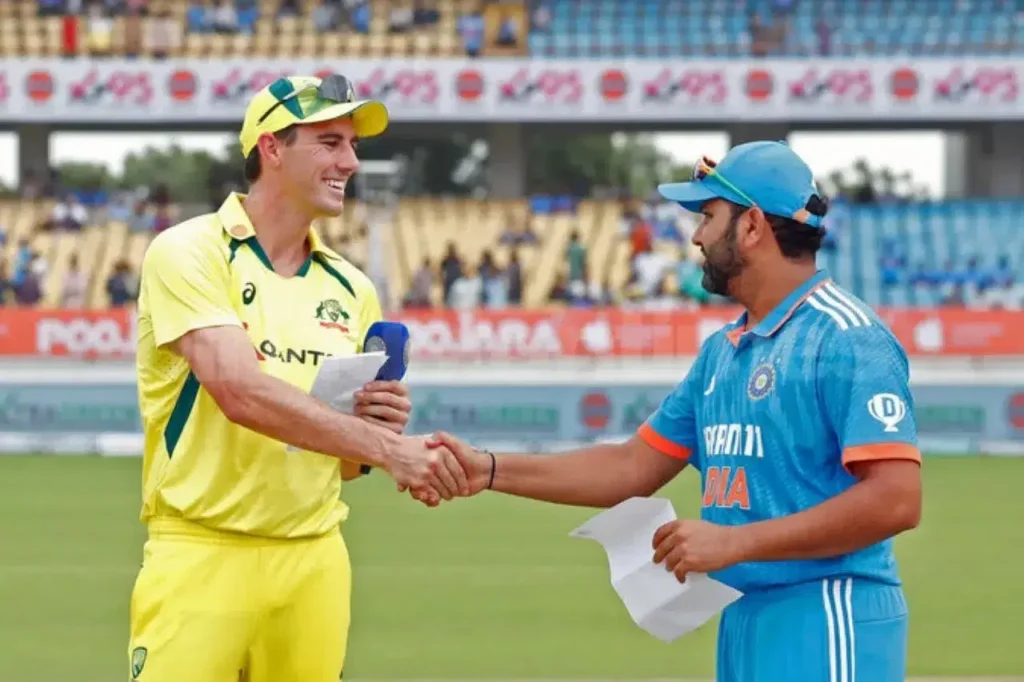
India’s Strengths:
- A formidable batting lineup with depth and versatility.
- A diverse spin attack capable of exploiting subcontinental conditions.
India’s Weaknesses:
- Dependence on key pacers, with potential concerns over Bumrah’s fitness.
- Occasional inconsistency in the lower middle order under pressure.
Australia’s Strengths:
- A world-class pace attack with experience and aggression.
- Aggressive batting approach capable of dominating opposition bowlers.
Australia’s Weaknesses:
- Vulnerability against quality spin bowling in turning conditions.
- Reliance on experienced players, with limited exposure for emerging talents.
Head-to-Head Record in ICC Events
In ICC events, Australia holds a slight edge over India, with 18 wins to India’s 16 across various tournaments. In the ICC Champions Trophy specifically, both teams have faced each other four times, with India winning two matches, Australia winning one, and one match ending with no result.
Key Players to Watch
Identifying the potential game-changers in both squads is crucial for anticipating the dynamics of the upcoming tournament.
India:
- Virat Kohli: A stalwart in India’s batting lineup, Kohli’s experience and consistency make him a pivotal player. His ability to anchor the innings and accelerate when needed will be vital for India’s success.
- Jasprit Bumrah: Returning from injury, Bumrah’s pace and precision, especially in the death overs, can be a deciding factor in tight matches. His form will significantly influence India’s bowling performance.
- Hardik Pandya: As a dynamic all-rounder, Pandya’s explosive batting and handy medium-pace bowling provide India with flexibility and balance. His role as a finisher could prove crucial in high-pressure situations.
Australia:
- Steve Smith: Renowned for his unorthodox yet effective batting technique, Smith’s ability to play long innings and adapt to different conditions makes him a cornerstone of Australia’s batting unit.
- Pat Cummins: Leading the team as captain and spearheading the bowling attack, Cummins’ leadership and performance with the ball will be instrumental in Australia’s campaign.
- Glenn Maxwell: Known for his aggressive batting and off-spin bowling, Maxwell’s versatility adds depth to Australia’s lineup. His capability to change the game’s momentum quickly makes him a player to watch.
Final Verdict & Predictions
On paper, both teams exhibit a blend of experienced players and emerging talents, each with distinct strengths.
India’s Prospects:
- Strengths: A robust batting lineup with depth, complemented by a versatile spin attack suited to subcontinental conditions.
- Challenges: Dependence on key pacers like Bumrah, whose fitness could be a concern, and the need for lower-order batsmen to perform consistently under pressure.
Australia’s Prospects:
- Strengths: A formidable pace attack capable of exploiting varied conditions and an aggressive batting approach that can dominate opposition bowlers.
- Challenges: Potential vulnerability to quality spin bowling and the necessity for middle-order stability, especially if the top order falters.
Prediction:
Considering the conditions in Pakistan and the UAE, which often favor spin, India might have a slight advantage due to their proficient spin attack and batsmen’s familiarity with such pitches. However, Australia’s potent pace battery and aggressive gameplay cannot be underestimated. The outcome could hinge on key moments, such as handling pressure situations and individual performances.
The ICC Champions Trophy 2025 promises an exhilarating contest between India and Australia, two cricketing giants with rich histories and competitive spirits. Both teams have meticulously selected squads aiming for glory, setting the stage for a thrilling tournament. Cricket enthusiasts worldwide eagerly await this showdown, anticipating high-quality cricket and memorable moments.
Check out the Champions Trophy Stats
